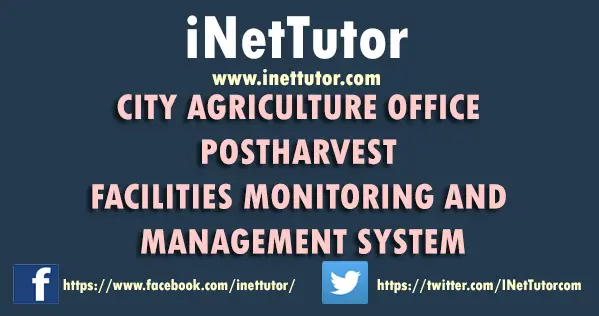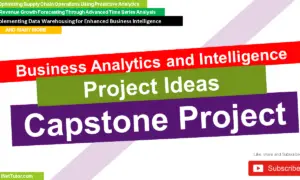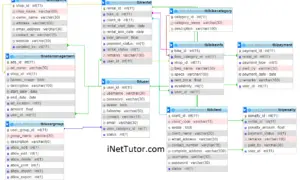CITY AGRICULTURE OFFICE POST-HARVEST FACILITIES MONITORING AND MANAGEMENT SYSTEM
Introduction
The City Agriculture Office is the principal Office of the City Government responsible for the promotion of agricultural development and growth through increase productivity. Agriculture office plays the role to ensure food security toward self-sufficiency in rice, corn, livestock, fisheries and high value crops. However, processes will be more accurate if they will upgrade their systems into modern technology. Since the innovation of technologies nowadays is very well known to us already because of many organization and companies used it that will truly helped their businesses and improves the production and processes of their works.
Post-harvest Facilities Monitoring and Management System of Supply and Equipment helps to measure environmental performance by evaluating a facility monitoring and management of supply and equipment used for post-harvest, farm management and distribution of supplies to scope areas compares actual farm practices and site specific details with what is perceived to be the best practice for that site using expert system together with scoring and ranking techniques.

Purpose and Description of the Project
The Post-harvest Facilities Monitoring and Management System of Supply and Equipment will help City Agriculture Office to increase the level of monitoring the facilities during post-harvest and to track the check-in, checkout of supplies and equipment and analyze equipment’s usage. The program provides technical knowledge for selecting and applying advanced technologies in the agricultural system that will be very helpful to them as well as the clientele. The system is portable and maintains data that can be updated from time to time. The administrator or the assigned personnel is responsible for managing and updating the inputted data in the system.
Objectives of the Project
- To convert the manual process of monitoring the facilities, supplies and equipment into a reliable information database system
- To increase the level of monitoring facilities during post-harvest
- To secure and track the disposal of supply and equipment.
Methodology
The researchers used the Rapid Application Development (RAD) as one of the method of prototyping methodology for the system development of the developed system.
Stages of RAD:
Planning and Analysis Phase
In this phase, the researchers define different activity on the study. They prepare the needs assessment survey for the data gathering to determine the needs, problems, project’s scope and the different system requirements.
Design Phase
Before the developers proceeded to the actual coding, the requirements were identified what would be the output of the system. In this phase, the developers create a Schematic Diagram / Flowchart to capture the actual layout of the system design.
Development Phase
In this stage, the developer of the system identified the requirements for the system development.
The system programmer created the source codes necessary for the system to be constructed, reviewed and revised the design of schematic diagram, and tested the functionalities of the system.
Testing Phase
In this phase, the researchers undergone testing to ensure the system’s functions and features are well developed or the hardware and software needed is improved. It is designed to measure the functionality according to Carter H. Good and Douglas E. Skates.
Implementation Phase
The implementation stage involves implementing the new system and managing the change from the old system environment to the new one. This may include implementation bridges between existing and new system, converting data, and training users. User acceptance is the point of the implementation stage.
Maintenance Phase
Once when the customers starts using the developed system then the actual problems comes up and needs to be solved from time to time. This process where the care is taken for the developed product is known as maintenance.
Development Tools:
PHP, MySQL, Bootstrap, JQuery, Brackets
You may visit our facebook page for more information, inquiries and comments.
Hire our team to do the project.


